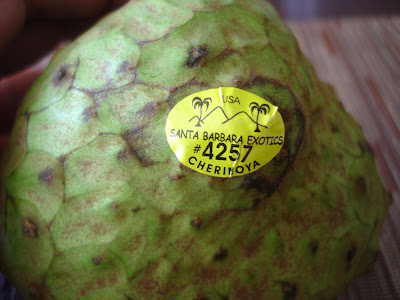I've been wanting a Manila mango for the longest time and I finally got one. Since I'm going to keep it potted, I wanted it to branch out at a low height so I chopped it in half. My intention is for it to branch out at the top. Here it is before I cut it.

Here it is after I cut it in half. There is a green stick used for support behind the tree so don't mistake the stick for the trunk of the tree.

Here are the two halves side by side to give you an idea of where I cut it.

I potted the top half in the hope that it will grow roots and become another tree. I doubt this will work since the experiment with my Carrie mango failed.

And here are the two potted halves side by side.

I chopped off the top of the trunk below the "purplish" leaves to stimulate growth and cut the lower leaves in half. I then placed a two liter soda bottle with the bottom cut off over the plant to serve as a mini greenhouse. I placed a zip lock bag over the top to keep the moisture in. Unfortunately, I did not take any pictures of it.
UPDATE 7/21/00
The top half sprouted some leaves!!! I don't have any pictures yet. The bottom half sprouted about 4 branches with a few other spots that look "plump." Not sure if they'll be new branches or inflorescence.
UPDATE 7/24/10
The leaves are getting too big for the zip lock bag and I'll have to change it to something else more roomier.

UPDATE 7/28/10 Wednesday
The leaves have gotten even bigger.

A closer view.

Here it is after I put another water bottle on top if it. This is how it is all day.

Here is the bottom half of the original tree. It sprouted three branches from the top and one lower down.































